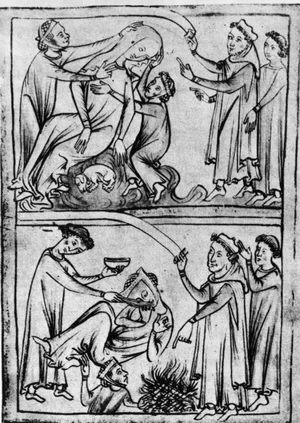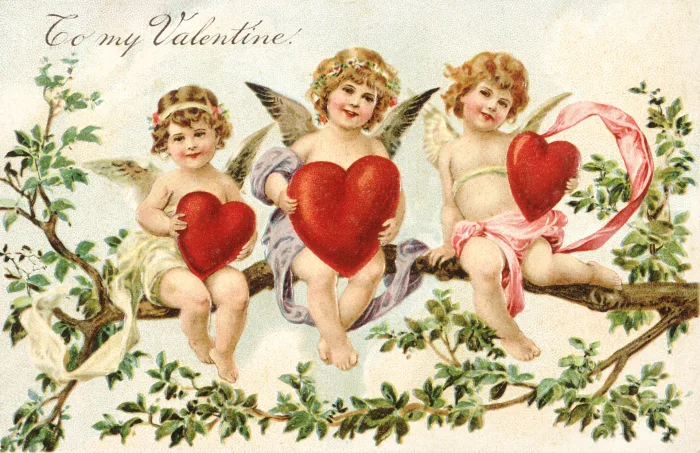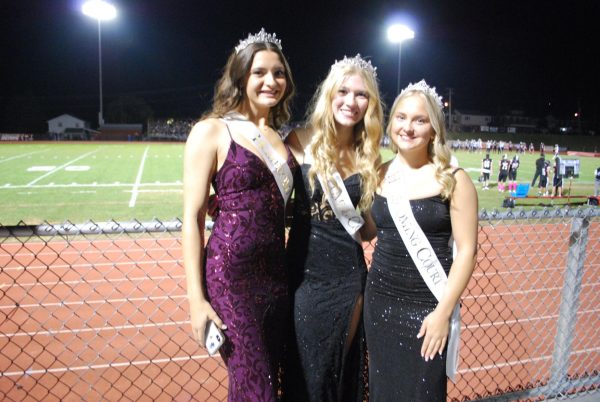The Ancient Origins of Valentine’s Day
A Valentine’s Day card with cherubs made in the Victorian Era, K.J. Historical/Corbis/Getty Images
Valentine’s Day’s known for fluffiness, adoration, love, and chocolate. The Holiday finds itself with one of the most ambiguous histories. For as much as people celebrate Valentine’s Day, nobody’s quite sure where it came from. However, it’s suspected it had much to do with the Romans.
According to NPR, “The ancient Romans may also be responsible for the name of our modern day of love. Emperor Claudius II executed two men — both named Valentine — on Feb. 14 of different years in the third century. Their martyrdom was honored by the Catholic Church with the celebration of St. Valentine’s Day”
During this time period, Ancient Rome was ruled by Emperor Claudius II. He had a strange theory that soldiers fought better than when in a relationship. Due to this, he decreed that all young men would be banned from marriage. This left many couples heartbroken as their dreams of uniting in matrimony were shattered.
A priest by the name of Valentine couldn’t stand to see the tears of all those young people. He married people in secret until he was caught and sentenced to death.

There was a second Valentine, also in Rome, who faced a grim end for trying to do the right thing.
The man was imprisoned for trying to help Christians escape Roman prisons which were known for being brutal and torturing inmates.
While confined to prison, Valentine fell in love with a young woman who came to visit his cell. This woman is speculated to have been the jailer’s daughter, but there is no confirmation of such. So moved, he allegedly wrote her a love letter which was signed with, ‘From your Valentine’ before he was killed in prison.
Those two Valentines may have been the namesake for the holiday, but that still doesn’t fill in all the gaps. There was a pagan festival called Lupercalia that may have been the foundation for the modern holiday we now know to have grown from.
Lupercalia was held in the middle of February and honored the Roman god Faunus, god of agriculture, and the Roman founders Romulus and Remus.
The festival was centered around bringing fertility to the crops and people for the coming year. To do this, priests would sacrifice a goat and a dog (the former representing fertility and the latter representing purification) then dip the goat hide in sacrificial blood. The hide would then be gently brushed against women and crop fields by the priests in hopes of bringing good fertility for the coming year.
The festival continued on from there as later that day, all of the women would put their name in an urn. Then, like a match-making lottery, would be randomly paired off with young men for the year. This practice was very successful as most couples ended up marrying each other.
Unfortunately, the holiday would be wiped out at the end of the fifth century by Pope Gelasius, who found the holiday to be un-Christian. According to Britannica.com,“At the end of the 5th century, Pope Gelasius I forbid the celebration of Lupercalia and is sometimes attributed with replacing it with St. Valentine’s Day”
We now associate Valentine’s Day with a cherub named Cupid, an angelic baby with arrows of love. The mythical being has deep roots in Ancient Greece with Eros, God of Love.
Eros is most commonly thought to have Aphrodite as his mother. You have heard of Aphrodite, Goddess of Beauty, as she is one of the most well known Greek gods today. Whoever Eros’s father is, has been subjected to a lot more questioning, but is mostly contested between Ares (God of War) and Zeus (God of the Sky).
The God of Love’s most famous myth is a tragic love story between him and his star crossed mortal lover Psyche. To put the story very simply, Eros stopped Psyche from entering an arranged marriage and swept her off to his palatial homestead to be pampered and doted on everyday.
Their beautiful life came to a tragic end when Psyche’s sisters, jealous of the wealth and luxury Psyche had, planted paranoia in her mind and convinced the woman to turn on the god. The entire time Psyche had stayed with Eros, Eros had stayed invisible because he did not want to scare her with his un-mortal appearance. The sisters exploited this and turned doubt to fear. Psyche took a lantern and dagger to Eros’ bedchambers at night. When she saw his true face, she could not find it in herself to kill him as her sisters had said. Eros awoke and, feeling hurt and betrayed, abandoned his home and ran to his mother Aphrodite, who cursed Psyche to live out a terrible fate.
The myth of Eros and Psyche was unfortunately forgotten too. The gray weather of February, instead of being gloomy like the grim tales of the past, came to represent the feathers of doves and other love birds.
People in Britain and France during the middle ages believed that that time of the year was the beginning of bird mating season. The first writing of Valentine’s Day as a romantic celebration came from Geoffrey Chaucer in his poem ‘Parliament of Foules’ where he wrote, “For this was sent on Seynt Valentyne’s day / Whan every foul cometh ther to choose his mate”
Writing for Valentine’s Day didn’t occur in writing form until after the 1400s, although it had occurred as general greetings since the Middle Ages. The year 1415 marks the first known Valentine’s Day poem. It was written by the Duke of Orleans to his wife while he was imprisoned in the Tower of London due to him having been captured in the heat of battle. Some years later, King Henry V is thought to have hired a writer by the name of John Lydgate to write a Valentine’s Day note to Catherine Valois.
Despite all of the information we have now, the history of the holiday is still very much shrouded in mystery. We don’t know if all of these things were definite causes of modern Valentine’s Day or not.
Though, as history has progressed, so too has the holiday. No longer do we have to think about some of the grim tales of the past. This Valentine’s Day people can rejoice the modern way with chocolate, roses, and love for all.























